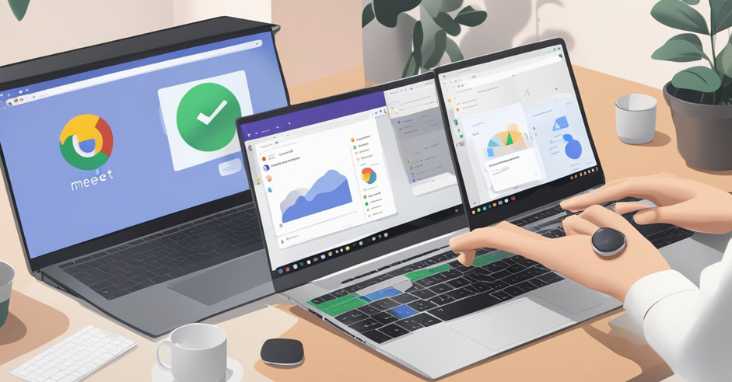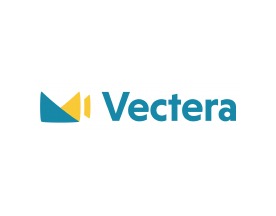Google Meet vs Zoom: Which video conferencing platform is better? Both have strengths: Zoom excels in features & flexibility, while Google Meet is great for integration with Google services & simplicity.
With the rise of remote work and virtual meetings, video conferencing software has become an essential tool for businesses and individuals alike. Two of the most popular options on the market are Google Meet and Zoom. Both platforms offer similar features such as screen sharing, chat functions, and the ability to record meetings. However, there are also notable differences between the two that may impact which one is the best fit for your needs.

In this article, we will provide an overview of Google Meet vs Zoom, comparing their user interface and experience, meeting setup and management, features and functionality, security and privacy, integration and compatibility, pricing and plans, and additional considerations. By the end of this article, readers will have a clearer understanding of the strengths and weaknesses of each platform, and be better equipped to make an informed decision on which one to use for their virtual meetings.
Key Takeaways
- Google Meet and Zoom are two popular video conferencing software options with similar features.
- The platforms differ in their user interface and experience, meeting setup and management, features and functionality, security and privacy, integration and compatibility, and pricing and plans.
- Consider your specific needs and priorities when choosing between Google Meet vs Zoom.
Overview of Platforms
When it comes to video conferencing, two of the most popular options are Google Meet and Zoom. Both platforms offer similar features, but there are some notable differences that may make one a better fit for your needs than the other.
Google Meet: An Overview
Google Meet is a video conferencing platform that is part of the Google Workspace suite of tools. It can be accessed through the web or through the Google Meet app on Android and iOS devices. One of the benefits of Google Meet is that it integrates seamlessly with other Google Workspace tools, such as Gmail and Google Calendar, making it easy to schedule and join meetings.
Google Meet also offers features such as screen sharing, recording, and real-time captions. It supports up to 250 participants in a single meeting, and meetings can be joined from a web browser without the need for any additional software.
Zoom: An Overview
Zoom is another popular video conferencing platform that can be accessed through the web or through the Zoom app on Windows, Mac, Android, and iOS devices. It offers a range of features including screen sharing, recording, and virtual backgrounds. Zoom also supports up to 1000 participants in a single meeting, making it a good choice for larger groups.
One of the benefits of Zoom is that it offers a range of pricing plans, including a free plan that allows for meetings of up to 40 minutes. Zoom also offers a range of add-ons and integrations, such as the ability to integrate with popular email and calendar tools.
In summary, both Google Meet vs Zoom offer similar features and can be accessed through a variety of platforms. However, Google Meet may be a better fit for those who already use Google Workspace tools, while Zoom offers more pricing options and integrations. For more information on the features and capabilities of both platforms, check out this comparison guide.
User Interface and Experience

Google Meet Interface
Google Meet has a simple and user-friendly interface that is easy to navigate. The main screen displays the user’s upcoming meetings with the option to join or start a new meeting. The user can also access their meeting history and settings from the main screen. The interface is intuitive, with clear icons for muting, turning off the camera, and sharing the screen.
Google Meet also offers a grid view that allows users to see up to 49 participants at once. This feature is useful for larger meetings and makes it easier to see who is speaking. Additionally, Google Meet offers real-time captions, which can be helpful for users who are deaf or hard of hearing.
Zoom Interface
Zoom’s interface is also user-friendly and intuitive. The main screen displays the user’s upcoming meetings, with the option to join or start a new meeting. The interface is straightforward, with clear icons for muting, turning off the camera, and sharing the screen.
Zoom offers a gallery view that allows users to see up to 49 participants at once, similar to Google Meet. Zoom also offers virtual backgrounds, which can be fun and useful for users who want to hide their surroundings during a meeting.
Overall, both Google Meet vs Zoom offer user-friendly and intuitive interfaces that make it easy to navigate and participate in meetings. However, Google Meet’s real-time captions and Zoom’s virtual backgrounds are unique features that may be more appealing to some users.
For more information on the user interface and experience of Google Meet vs Zoom, check out this article from Business Insider.
Meeting Setup and Management
Scheduling and Calendar Integration
Both Google Meet vs Zoom offer scheduling and calendar integration features to help users manage their meetings. Google Meet allows users to schedule meetings through Google Calendar, which is a popular calendar application used by many individuals and organizations. Users can easily create a new meeting event in Google Calendar and add Google Meet as the conferencing tool. This integration ensures that all the meeting details, including the meeting link, are automatically added to the calendar event.
Zoom also offers scheduling and calendar integration features that allow users to schedule meetings through Microsoft Outlook, Google Calendar, or any other calendar application that supports iCalendar (.ics) files. Users can easily create a new meeting event in their preferred calendar application and add Zoom as the conferencing tool. Zoom also automatically adds the meeting details, including the meeting link, to the calendar event.
Meeting Host Controls
Both Google Meet vs Zoom offer meeting host controls that allow hosts to manage their meetings effectively. Google Meet provides hosts with various controls, such as the ability to mute or unmute participants, turn off participant cameras, and end the meeting. Hosts can also enable the waiting room feature, which allows them to control who can join the meeting.
Zoom also offers meeting host controls that allow hosts to manage their meetings effectively. Hosts can mute or unmute participants, turn off participant cameras, and end the meeting. Zoom also provides additional features, such as breakout rooms and polling, that allow hosts to manage their meetings more efficiently.
Overall, both Google Meet vs Zoom offer excellent meeting setup and management features, making it easy for users to schedule and manage their meetings effectively. Users can choose the platform that best suits their needs based on their preferences and requirements.
Here is an external resource that provides a detailed comparison between Google Meet vs Zoom.
Features and Functionality
Google Meet and Zoom are both popular video conferencing platforms that offer a variety of features and functionality. In this section, we will compare the two platforms based on their video and audio quality, collaboration tools, and advanced meeting features.
Video and Audio Quality
Both Google Meet vs Zoom offer high-quality video and audio, but there are some differences between the two platforms. Google Meet supports up to 720p video resolution, while Zoom supports up to 1080p. However, Google Meet offers noise cancellation, which can help reduce background noise and improve audio quality. Zoom also offers noise cancellation, but only for paid subscribers.
Collaboration Tools
Google Meet vs Zoom both offer a range of collaboration tools to help teams work together more effectively. Both platforms offer screen sharing and file sharing, as well as chat features for team communication. Google Meet also includes a whiteboard feature, which can be useful for brainstorming and visual collaboration. Zoom offers team chat, which allows participants to communicate with each other during a meeting without disrupting the main conversation.
Advanced Meeting Features
Both Google Meet vs Zoom offer advanced meeting features, such as live streaming, recording, and translated captions. Zoom also offers polls and Q&A features, which can be useful for engaging participants during a meeting. Google Meet does not currently offer these features, but they may be added in the future.
Overall, both Google Meet vs Zoom offer a range of features and functionality that can help teams collaborate effectively. The choice between the two platforms may come down to specific needs and preferences. For more information, check out this comparison of Google Meet and Zoom.
Security and Privacy

Encryption and Data Protection
Both Google Meet vs Zoom offer encryption for their video meetings. Google Meet uses the Advanced Encryption Standard (AES) 256-bit encryption, which is the same level of encryption used by banks and other financial institutions. Zoom also uses AES 256-bit encryption, but it has been criticized for its implementation of encryption. In 2020, Zoom was found to have been misleading users by claiming to use end-to-end encryption when in fact it only used transport encryption. However, Zoom has since updated its encryption protocols to provide end-to-end encryption for all users.
In terms of data protection, both platforms have policies in place to protect user data. Google Meet is fully compliant with the General Data Protection Regulation (GDPR) and has strict policies in place to protect user data. Zoom also has a privacy policy that outlines how it collects and uses user data. However, Zoom has been criticized for its data privacy practices in the past, particularly around its sharing of user data with third-party companies.
Meeting Security Features
Both Google Meet vs Zoom offer a range of meeting security features to prevent unauthorized access to meetings. Google Meet has a waiting room feature that allows the host to control who can enter the meeting. The host can also remove participants from the meeting or end the meeting at any time. Zoom also has a waiting room feature, as well as a feature that allows the host to lock the meeting once all participants have joined.
Zoom has also been criticized for its vulnerability to “zoombombing,” where uninvited guests join a meeting and disrupt it. However, Zoom has implemented a range of security features to prevent zoombombing, such as requiring a password to join a meeting and enabling the waiting room feature by default.
Overall, both Google Meet vs Zoom have strong security and privacy features in place to protect user data and prevent unauthorized access to meetings. However, users should be aware of the potential risks and take steps to ensure the security of their meetings, such as using strong passwords and enabling waiting room features. For more information on video conferencing security, check out this resource by Cisco.
Integration and Compatibility

Third-Party Integrations
Both Google Meet vs Zoom offer third-party integrations, allowing users to connect with other apps and services. However, Zoom has a more extensive list of integrations compared to Google Meet.
Zoom integrates with popular apps like Zapier, HubSpot, and Salesforce, making it easier for businesses to streamline their workflows and improve productivity. On the other hand, Google Meet only has a limited number of integrations, such as Google Drive and Google Calendar.
Platform Compatibility
When it comes to platform compatibility, both Google Meet vs Zoom are available on multiple platforms, including Windows, Mac, Android, iOS, and web browsers. However, Zoom has an advantage over Google Meet in terms of compatibility with older operating systems.
Zoom can run on Windows 7 and macOS 10.9 or later, while Google Meet requires Windows 10 or later and macOS 10.13 or later. This means that Zoom is more accessible to users who have not updated their operating systems in a while.
Overall, while both Google Meet vs Zoom offer integration and compatibility with various platforms and third-party apps, Zoom has a more extensive list of integrations and is more accessible to users with older operating systems.
Sources:
Pricing and Plans

When it comes to choosing between Google Meet vs Zoom, pricing and plans are important factors to consider. Both platforms offer free and paid plans, but the features and limitations of each plan differ.
Comparing Free Plans
Google Meet vs Zoom both offer a free version of their platform, but there are some differences. Google Meet’s free plan allows for up to 100 participants and has no time limit, while Zoom’s free plan allows for up to 100 participants but has a 40-minute time limit for group meetings.
In terms of features, both platforms offer basic video conferencing capabilities such as screen sharing, virtual backgrounds, and chat. However, Google Meet’s free plan requires a Google account to use, while Zoom’s free plan does not.
Paid Plan Options
For those who need more advanced features and capabilities, both Google Meet vs Zoom offer paid plans. Google Meet’s paid plans include the Pro plan and Enterprise plan, while Zoom’s paid plans include the Pro plan, Business plan, and Enterprise plan.
Google Meet’s Pro plan starts at $9.99 per user per month and includes features such as recording, attendance tracking, and breakout rooms. The Enterprise plan offers even more advanced features such as live streaming and advanced security options.
Zoom’s Pro plan starts at $14.99 per host per month and includes features such as unlimited meeting duration, user management, and reporting. The Business plan includes additional features such as dedicated phone support and vanity URLs, while the Enterprise plan offers the most advanced features such as unlimited cloud storage and custom branding.
It is important to note that both platforms offer discounts for annual subscriptions and have different pricing tiers based on the number of users. It is recommended to carefully review the pricing and features of each plan before making a decision.
Overall, both Google Meet vs Zoom offer a range of pricing and plan options to meet the needs of different users. Depending on the specific needs of the user, one platform may be more suitable than the other. For more information on pricing and plans, check out this comparison chart from Business 2 Community.
Additional Considerations

Capacity and Scalability
Both Google Meet vs Zoom offer a wide range of participant capacity and group meetings. Google Meet allows up to 250 participants in a single meeting, while Zoom allows up to 1,000 participants in a single meeting. However, Zoom offers more scalability options, allowing users to host webinars, town hall meetings, and other events with up to 10,000 participants.
When it comes to scalability, Zoom also offers more collaboration tools, such as virtual backgrounds, breakout rooms, and live streaming. These tools can be especially useful for larger events where participants need to interact with each other or share information.
Company Branding and Customization
Google Meet and Zoom both offer some degree of company branding and customization options. Google Meet allows users to change the background of their meeting and add a custom logo to their meeting screen. Zoom, on the other hand, allows users to customize their meeting screen with their own branding and logos, as well as change the color scheme of the interface.
For companies that prioritize branding and customization, Zoom may be the better choice. However, it’s worth noting that Google Meet’s integration with other Google apps, such as Calendar and Gmail, can make it a more seamless option for companies that already use these tools.
Overall, both Google Meet vs Zoom offer robust features and capabilities for online meetings and events. The choice between the two will ultimately depend on the specific needs and preferences of the user.
For more information on the differences between Google Meet vs Zoom, check out this article.
Final Analysis

Determining the Winner
After a thorough comparison of Google Meet vs Zoom, it is clear that both platforms offer unique features and benefits. However, when it comes to determining the winner, it ultimately depends on the user’s specific needs and preferences.
In terms of video and audio quality, both platforms provide high-quality performance. Google Meet offers a more stable connection with fewer disruptions, while Zoom has more advanced features for enhancing video and audio quality.
When it comes to pricing, Google Meet is the clear winner. It offers a free plan with basic features, as well as affordable paid plans with advanced features. On the other hand, Zoom’s pricing plans can be quite expensive, especially for larger organizations.
In terms of user interface, both platforms are user-friendly and easy to navigate. However, Google Meet has a simpler and more streamlined interface, while Zoom offers more customization options.
When it comes to security, both platforms have implemented measures to ensure the safety and privacy of users. However, Zoom has faced some security issues in the past, which may make some users hesitant to use the platform.
Overall, the bottom line is that both Google Meet vs Zoom are great options for video conferencing. However, for those looking for a more affordable option with a simpler interface, Google Meet may be the better choice. For those in need of more advanced features and customization options, Zoom may be the better option.
For more information on the comparison between Google Meet vs Zoom, check out this article by Business Insider, a reputable source in the tech industry.
Frequently Asked Questions

What are the main differences in video quality between Google Meet vs Zoom?
Google Meet vs Zoom both offer high-quality video and audio, but there are some differences in their video quality. Zoom has a higher resolution and bitrate, which means that it can handle higher-quality video streams. Google Meet, on the other hand, uses less bandwidth and can work well even on slower internet connections.
How do Google Meet vs Zoom compare in terms of features for educational purposes?
Both Google Meet vs Zoom have features that make them suitable for educational purposes. Google Meet integrates with Google Classroom, making it easy for teachers to schedule and join meetings with their students. Zoom has a range of features specifically designed for education, such as breakout rooms and virtual backgrounds.
What are the pricing differences between Google Meet vs Zoom for businesses?
Google Meet vs Zoom have different pricing plans for businesses. Google Meet is included with G Suite, which starts at $6 per user per month. Zoom has a range of pricing plans, starting with a free plan that includes basic features and limited meeting time, and going up to a range of paid plans with more features and longer meeting times.
Can you outline the pros and cons of using Google Meet vs Zoom for video conferencing?
Google Meet vs Zoom both have their pros and cons. Google Meet is easy to use and integrates well with other Google tools, but has fewer features than Zoom. Zoom has a range of features and is popular with businesses, but can be more complex to use and has had some security issues in the past.
What limitations should users be aware of when using Google Meet for their meetings?
Google Meet has some limitations that users should be aware of. For example, it has a maximum of 250 participants per meeting, compared to Zoom’s maximum of 1,000 participants. It also has limited features compared to Zoom, such as the ability to share screens with multiple participants at once.
How do the free versions of Google Meet vs Zoom differ in functionality and limitations?
The free versions of Google Meet vs Zoom differ in functionality and limitations. Google Meet’s free version has a maximum meeting time of 60 minutes, and lacks some of the features of the paid version, such as recording and live streaming. Zoom’s free version has a maximum meeting time of 40 minutes, and also lacks some features of the paid version, such as the ability to host webinars.
For more information on the differences between Google Meet vs Zoom, check out this comparison article by Business Insider.












